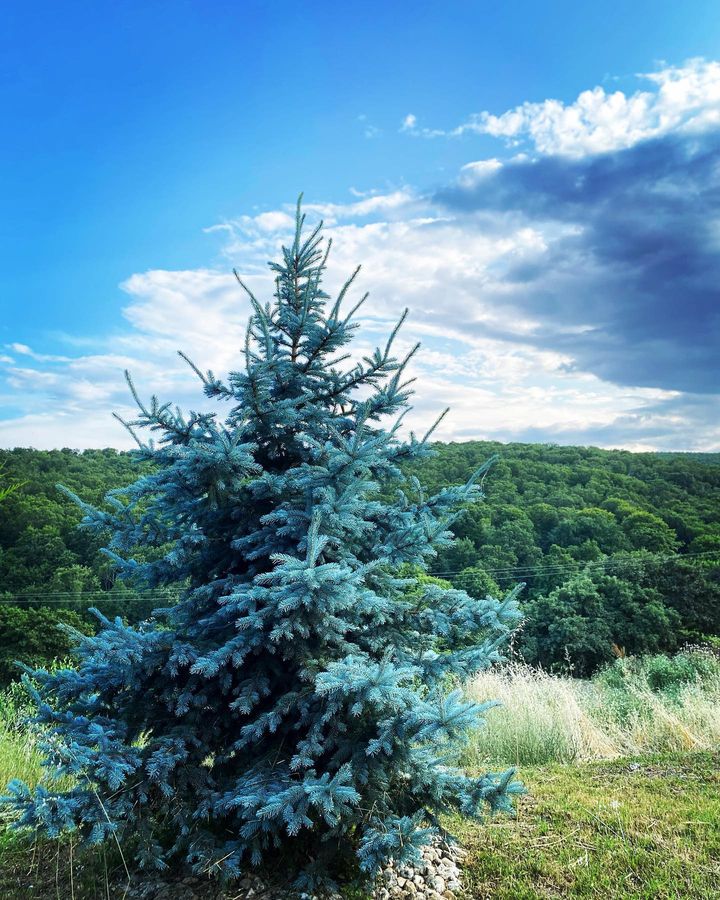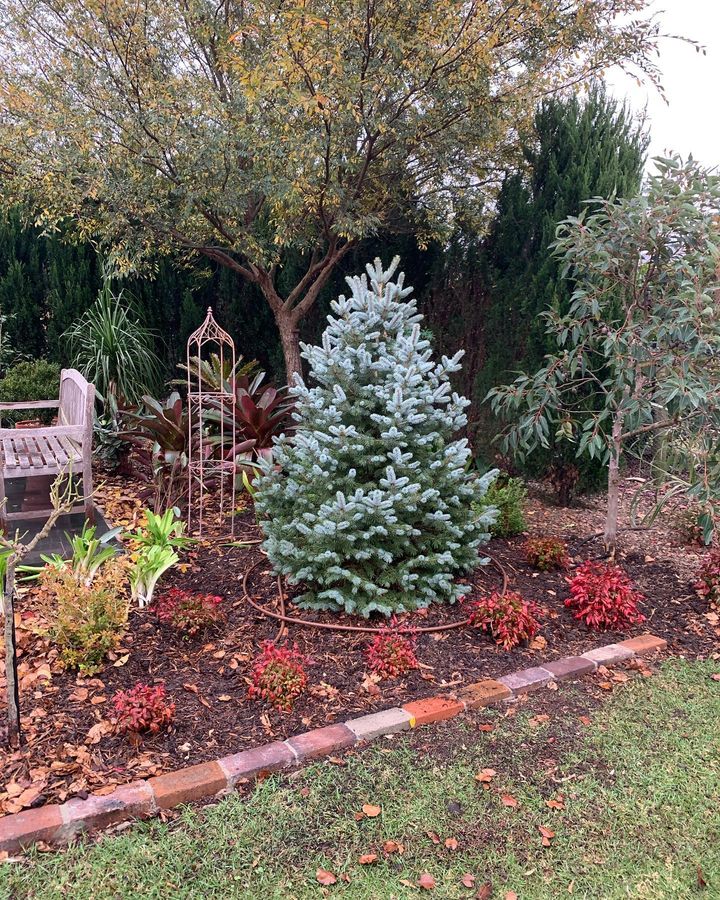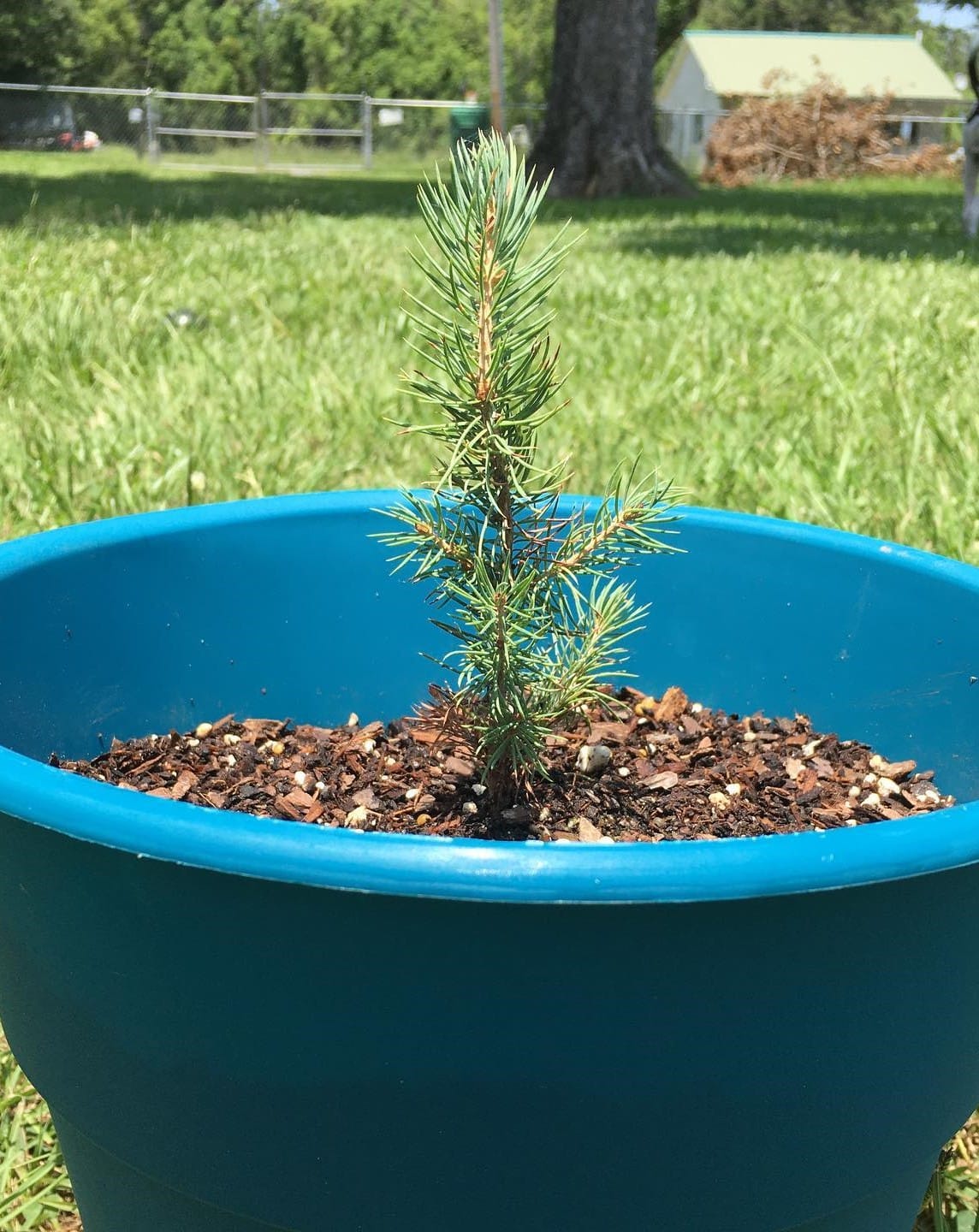Relish the cascading branches of the Blues Weeping Colorado Spruce tree that looks like a lovely waterfall in your garden all year round with proper care.
Skim through the article to learn everything you can do to decorate your garden with the blue needles of the Colorado Blue Spruce.
Table of Contents Show
Overview Of The Blues Weeping Colorado Spruce
Known for its adaptability, the Blues Weeping Colorado Spruce is a native of the central Rocky Mountains of the southwestern United States.

Some of the overviews with its physical appearance are given below.
| Feature(s) | Description(s) |
|---|---|
| Scientific Name | Picea pungens 'The Blues' |
| Common Name | Colorado Spruce Blue Spruce Blues Weeping Colorado Spruce |
| Family | Pinaceae |
| Status & Ecology | Habit: Evergreen conifer trees with mounding, arching, or weeping branches Habitat: Meadows, Upland and Slopes, Stream Sides, Mountain Valleys USDA Zones: 2-8 |
| Growth Rate | Slow to moderate |
| Plant Size | Natural Setting: 60-75 feet long & 10-20 feet wide Garden: 5-10 feet long & 5-10 feet wide |
| Growing Seasons | Spring and Fall (Highly preferred) Summer and Winter (Less Preferred) |
| Leaf | Shape: Pyramidal with short sharp needles Size: 3/4 to 1.25 inch long Color: Bright bluish green with silver lines on each side Texture: Prickly |
| Flowering Season | Summer (Rarely) |
| Fruits | Cones of 3-4 inches long |
| Grown For | Evergreen needles like foliage for landscaping and wind protection |
The Blues Weeping Colorado Spruce had such a unique elegance that the American Conifer Society declared it as ‘Collectors Conifer of the Year’ in 2008, along with Chamaecyparis obtusa ‘Gitte.’
The Blues Weeping Colorado Spruce: Cultivation And Care
Homing the native plant of America for its rustic silvery blue foliage can be the all-time wish of many gardeners.
So, provide the evergreen conifer with all the care it demands. The major 8 requirements are listed below.
1. Sunlight Requirement
Provide the plant at least 6 hours of full sun daily. However, place it in partial shade during the summer afternoons if growing it in the hardiness area above Zone 8.
The protection is to prevent the burning of the leaves from scorching light and damaging the plant’s look.
Meanwhile, the Blue Colorado Spruce enjoys direct morning light. You can maintain the light requirement even with a grow light.
2. Temperature Range
The Blues Weeping Colorado Spruce prefers moist and cool climates.
Meanwhile, avoid higher temperatures as much as possible as they can stunt the Blue Colorado Spruce growth.
So you can try balancing the hot days by misting the plant to drop the temperature and providing the plant with proper ventilation.
3. Humidity Level
Maintain higher humidity (70-80%) during spring and summer. In contrast, drop it to 55-65% during fall and winter for sturdier growth.
You can maintain humidity by installing a humidifier for indoor potted Blue Colorado Spruce.
As for the outdoor tree, you can plant it nearby a damp place or have a water reservoir near the plant.
However, avoid excess air moisture near the Blues Weeping Colorado Spruce as it invites diseases and pests.
4. Water Need
As a drought-tolerant plant, the Blue Colorado Spruce does not like stagnant water.
Also, check at least 4 inches of topsoil, if the planter exceeds 8 inches in depth, for any moisture to prevent overwatered conditions.
Alternatively, you can check the moisture using a soil tester and water it according to the reading.
Also, use a watering can with longer spouts to let the water fall directly into the soil.
5. Soil Requirement
Well-draining, slightly acidic soils (pH 5.5-7.0) rich in organic matter fit the Blue Colorado Spruce. Sandy soil or slightly clayey soil can fit the description.

Such conditions result in overwatering, which can cause your Colorado Blue Spruce leaves to turn yellow and suffer from root rot.
So, for the best, keep the soil well draining and slightly moist to enjoy a healthy tree. Meanwhile, improve the degraded soil quality by adding manure or nutrient soil.
6. Fertilizer Appliance
Fertilize the plant with balanced slow-release fertilizer 2 to 4 times a year and water it immediately to prevent root burning.
It is better to apply fertilizer in spring and summer, decrease during fall, and cease in winter.
Increase the potassium dose in the fall to help thicker trunk growth. Do it until the tree matures and then return to the normal dose, as mentioned above.
You can also use slow-releasing organic fertilizer, as the Blue Colorado Spruce needs support throughout its long lifespan.
7. Occasional Pruning
Pruning is not mandatory for the growth of the Colorado Blue Spruce as the plant features a triangular structure and does not hamper the growth of lower branches.
However, if the foliage becomes too dense, you might have to prune one or two branches to reduce the fight for nutrients.
Diseases like fungal tip blight, needle cast, and cytospora canker can trouble the tree leading to sticky tips, needle drops, and leaf scars.
So, you can snip off broken twigs or trim them off to give any shape but leave half their size during winter or early spring.
Apply neem oil and insecticidal soap to control pests problem and copper fungicide in case of disease infestation.
8. Repotting and Aftercare
Mostly conifer gardeners plant the Colorado Blue Spruce during the spring and fall time of the year, which attains a growth of 12 inches yearly.
This growth pace can make the potted Colorado Blue Spruce easily root bound within 5 years of plantation.
Meanwhile, restrain from removing all of the original soil from the trunk to refrain from stressing the tree.
How Big Do The Blues Weeping Colorado Spruce Get?
The Colorado Blue Spruce is a slow-growing but long-lasting evergreen conifer with over 200 years of lifespan.
You can expect a single Blues Weeping Colorado Spruce to get as big as 75 feet in its place of origin with a spread of 10 to 20 feet.
Nevertheless, how big the Colorado Blue Spruce get, they are never messy. So you do not have to worry about falls picking up, even if some have fallen to the ground.
As for the twigs, you can use them as propagation media instead of throwing them away because Colorado Blue Spruce is easy to propagate from cuttings.
You can even use graftings, seeds, and air layering methods to propagate Colorado Blue Spruce, but semi-hardwood cuttings are the best.
Start by collecting the cuttings in the early morning. Then, dip the cut end in a rooting hormone. Lastly, plant it in a mixture of peat and sand.

Supply the cutting with all the care requirements mentioned above and wait at least 4 to 6 months to let it be established.
Remember, a Spruce tree should be planted at least 10 feet far from a house, allowing the plant enough space to spread its branches.
Design Ideas Using The Blues Weeping Colorado Spruce Tree
Famous as Christmas trees, the Blues Weeping Colorado Spruce has always been a favorite landscape plant.
The color shade it provides is difficult to find and even more difficult to replace.
So, looking after the hardiness and low maintenance, the Blue Colorado Spruce is suitable for rock gardens, bordering, and stone walls.
Moreover, you can plant the Spruce in a sunny bordered location to showcase its bluish-green foliage. It can be a center of attraction that contrast with other garden plants.
Some of the plant combinations you can try with the Blues Weeping Colorado Spruce according to the height, bloom time, and color variations are:
- Height Complement: Dwarf plants like Creeping Phlox or Sedum can contrast the tall Colorado Blue Spruce. For a mid-level accent, you can also choose medium-range perennial plants like Russian Sage or Catmint.
- Bloom Time Complement: Choose flowering plants that match the Spruce’s growing season to add a vibrant color burst to the garden. It includes Tulips, Daffodils, Coneflowers, Black-eyed Susans, and Asters.
- Color Complement: Some plants that create an eye-catching combination with the bluish needle of the Spruce are Lambs Ear, Coral Bells, Coreopsis, Goldenrod, Yews, and Boxwoods.
However, consult any nearby local gardening office or nursery for more precise information based on your location.
And do check for the specific requirements before bringing them together, as some may have special care needs.
The Blues Weeping Colorado Spruce For Sale
After learning all the care needed and uses of the Colorado Blue Spruce, you are ready to bring one as it saves your seed sowing time.
Look at the trustworthy sites below with their delivery time to bring one home at a reliable price.
| Where to Buy | Expected Delivery Time |
|---|---|
| The Tree Center | Within 4-6 days |
| Amazon | Within 8-13 days |
| Conifer Kingdom | Within 3-10 days |
| Garden Goods Direct | Within 6-12 days |
From Editorial Team
Extra Knowledge!
The Blue Spruce was officially declared ‘The State Tree of Colorado’ by the General Assembly on March 7, 1939.
However, do not confuse Blue Spruce with the Blues Weeping Colorado Spruce, as the latter is a cultivar of Blue Spruce from the same species with brighter bluish needles.


